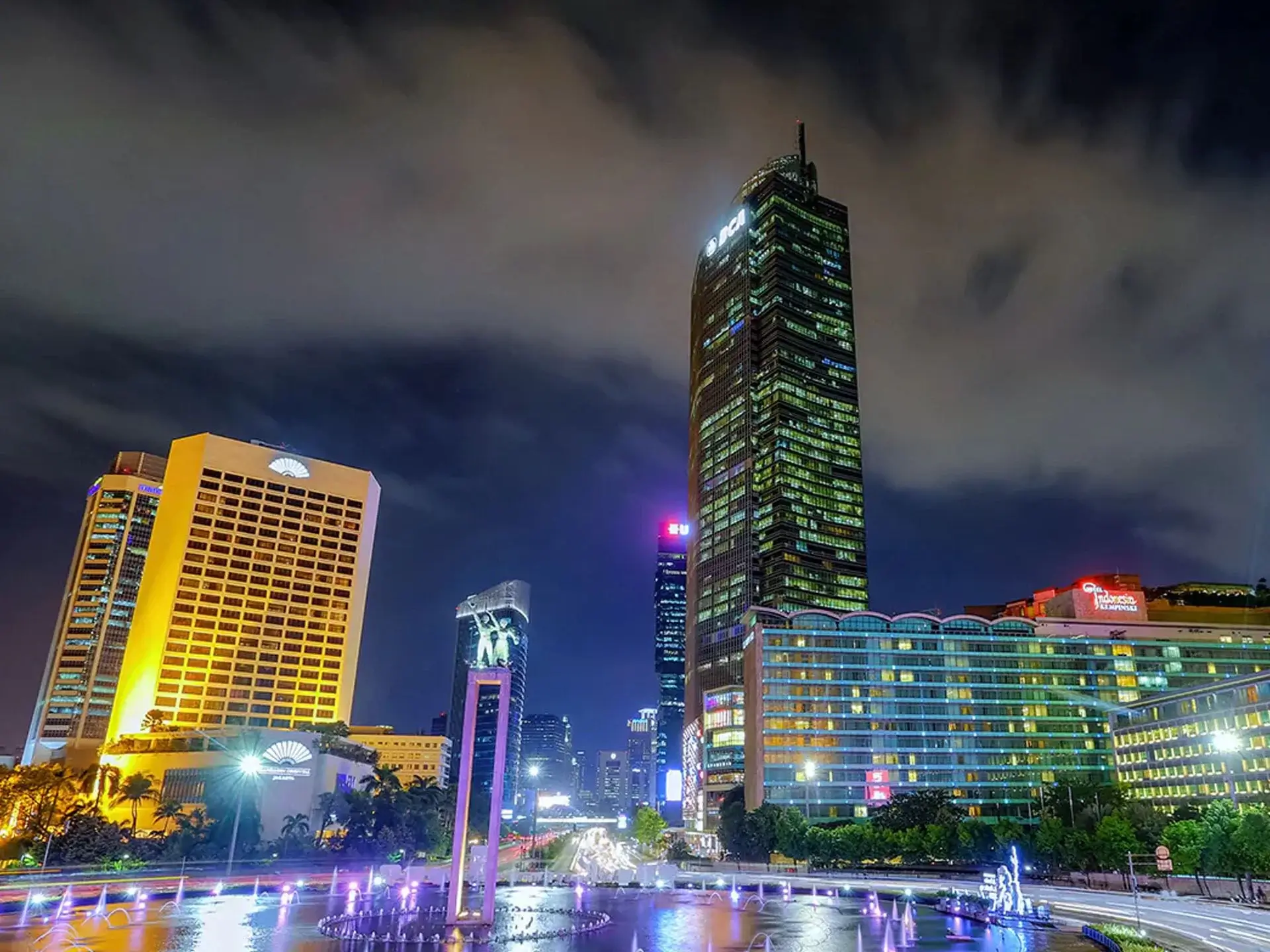Why Jakarta is Sinking into the Sea and what can be done about it

Rescue Efforts for a Sinking City
- Introduction
- The Causes of Jakarta’s Sinking: Examining the Human and Natural Factors Contributing to the City’s Subsidence
- Solutions to Jakarta’s Sinking: Exploring the Potential of Green Infrastructure and Other Strategies to Combat the Problem
- The Impact of Jakarta’s Sinking: Examining the Social, Economic, and Environmental Consequences of the City’s Subsidence
- Conclusion
Introduction
Jakarta, the capital of Indonesia, is sinking into the sea at an alarming rate. This is due to a combination of factors, including rapid population growth, inadequate infrastructure, and climate change. As a result, the city is facing a range of challenges, from flooding to land subsidence. Fortunately, there are a number of measures that can be taken to address this issue, such as improving drainage systems, constructing sea walls, and implementing sustainable development policies. With the right strategies in place, Jakarta can be saved from sinking into the sea.
The Causes of Jakarta’s Sinking: Examining the Human and Natural Factors Contributing to the City’s Subsidence
Jakarta, the capital of Indonesia, is a city of more than 10 million people and is home to some of the most vibrant and diverse cultures in the world. Unfortunately, the city is also sinking at an alarming rate due to a combination of human and natural factors. This subsidence is causing serious problems for the city’s infrastructure, economy, and environment.
The primary cause of Jakarta’s sinking is the over-extraction of groundwater. As the city’s population has grown, so has its demand for water. To meet this demand, the city has been pumping groundwater from beneath the surface at an unsustainable rate. This has caused the water table to drop, resulting in the land above it to sink.
In addition to over-extraction, climate change is also contributing to the city’s subsidence. Rising sea levels are causing coastal areas to flood, while higher temperatures are causing the soil to dry out and become more prone to sinking.
The effects of Jakarta’s sinking are far-reaching. The city’s infrastructure is being damaged, with roads and buildings becoming increasingly vulnerable to flooding and subsidence. The economy is also suffering, as businesses are forced to relocate due to the increased risk of flooding. Finally, the environment is being impacted, as the city’s wetlands and mangroves are being destroyed by the rising sea levels.
Despite the challenges, there is still hope for Jakarta. The city is taking steps to address the problem, such as introducing regulations to limit groundwater extraction and investing in infrastructure projects to protect against flooding. There is also a growing awareness of the need to reduce carbon emissions and mitigate the effects of climate change.
Jakarta’s sinking is a complex problem, but it is not insurmountable. With the right combination of human and natural solutions, the city can be saved. It is up to all of us to take action and ensure that Jakarta remains a vibrant and resilient city for generations to come.
Solutions to Jakarta’s Sinking: Exploring the Potential of Green Infrastructure and Other Strategies to Combat the Problem

Jakarta, the capital of Indonesia, is facing a crisis of sinking land. The city is sinking at an alarming rate of up to 25 centimeters per year, and the problem is only getting worse. This sinking is caused by a combination of factors, including over-extraction of groundwater, subsidence due to oil and gas extraction, and sea-level rise due to climate change.
The consequences of this sinking are dire. The city is already experiencing severe flooding, and the situation is only expected to worsen as the land continues to sink. In addition, the sinking is causing infrastructure damage, including damage to roads, bridges, and buildings.
Fortunately, there is hope. Jakarta can combat the problem of sinking land by exploring the potential of green infrastructure and other strategies. Green infrastructure, such as green roofs, green walls, and permeable pavements, can help reduce flooding by absorbing and storing rainwater. In addition, green infrastructure can help reduce the urban heat island effect, which is caused by the city’s concrete and asphalt surfaces.
In addition to green infrastructure, Jakarta can also explore other strategies to combat the problem of sinking land. For example, the city can implement better water management practices, such as reducing groundwater extraction and improving wastewater treatment. In addition, the city can invest in coastal protection measures, such as sea walls and mangrove restoration, to protect against sea-level rise.
Jakarta’s sinking land is a serious problem, but it is not an insurmountable one. By exploring the potential of green infrastructure and other strategies, the city can combat the problem and protect its citizens from the devastating effects of flooding and infrastructure damage. With the right strategies in place, Jakarta can rise to the challenge and create a more resilient and sustainable future.
The Impact of Jakarta’s Sinking: Examining the Social, Economic, and Environmental Consequences of the City’s Subsidence
Jakarta, the capital of Indonesia, is a city of more than 10 million people. It is a vibrant, bustling metropolis, home to a diverse population and a thriving economy. Unfortunately, the city is also sinking. Jakarta is one of the fastest-sinking cities in the world, with some areas dropping as much as 25 centimeters per year. This alarming rate of subsidence has serious consequences for the city’s social, economic, and environmental well-being.
The social consequences of Jakarta’s sinking are far-reaching. As the city sinks, it becomes increasingly vulnerable to flooding. This puts the lives and livelihoods of the city’s residents at risk. In addition, the sinking has caused displacement of people from their homes, leading to overcrowding and a lack of access to basic services. This has had a devastating impact on the city’s most vulnerable populations, including the poor and the elderly.
The economic consequences of Jakarta’s sinking are also significant. The city’s infrastructure is being damaged by the subsidence, leading to costly repairs and maintenance. In addition, the flooding caused by the sinking has disrupted transportation and commerce, leading to a decrease in economic activity. This has had a negative impact on the city’s economy, leading to job losses and a decrease in investment.
Finally, the environmental consequences of Jakarta’s sinking are also severe. The flooding caused by the subsidence has led to an increase in water pollution, as well as an increase in the spread of disease. In addition, the sinking has caused land erosion, leading to a decrease in biodiversity and an increase in the risk of landslides.
Jakarta’s sinking is a serious problem that requires urgent attention. However, it is not an insurmountable challenge. With the right policies and investments, the city can be saved. By investing in flood prevention and mitigation measures, the city can reduce the risk of flooding and protect its citizens. In addition, by investing in infrastructure and green spaces, the city can reduce its vulnerability to subsidence and protect its environment.
Jakarta’s sinking is a complex problem with serious consequences. However, with the right investments and policies, the city can be saved. By taking action now, we can ensure that Jakarta remains a vibrant, thriving city for generations to come.
Conclusion
Jakarta is sinking into the sea due to a combination of natural and human-induced factors. The city’s rapid population growth, combined with inadequate infrastructure and poor urban planning, has led to increased groundwater extraction and subsidence. To prevent further sinking, the city must implement better urban planning, reduce groundwater extraction, and invest in infrastructure that can help manage flooding and reduce the risk of sea-level rise. Additionally, the city must focus on reducing its carbon footprint and increasing its resilience to climate change. With the right policies and investments, Jakarta can be saved from sinking into the sea.









